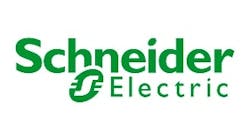Rebecca Wilhelm, assistant editor of Water & Wastes Digest, recently spoke with Steve Austin, engineering manager at Schneider Electric Co., about how water professionals can begin improving energy efficiency.
Rebecca Wilhelm: How are current regulations affecting the way water professionals see energy efficiency?
Steve Austin: In some cases they have been compatible, and in some cases they have been incompatible. Many regulations are important for safety and production, and energy efficiency may or may not be important in that. Sometimes regulations are at the expense of energy—it takes more energy to comply. But I think that is changing. Those pressures still may be in place, but I think there is a shift underway for regulations to drive energy efficiency.
With the increase in oil prices, everyone agrees that we need to reduce our dependence on foreign oil. With emissions and environmental concerns increasing, there is a sense of urgency to do something about that. We are going to have regulations; for example, carbon taxes. That is one of the first ones to be mentioned. What that means is energy efficiency is going to be key in helping meet future regulations. So it is a shift, I think, in regulatory focus.
Wilhelm: What are some obstacles water professionals face when trying to improve energy efficiency?
Austin: There is always the competition for capital money. You have a primary mission to provide quality water or an end-product, and so you have to do it safely, reliably and economically. Energy is always competing for production types of capital spending, and so that is a hurdle. That is the single biggest hurdle.
Wilhelm: Why is a focus on energy efficiency important?
Austin: In my lifetime, I have seen energy importance rise and fall depending on what was going on with the market. Now the demand and the competition for energy resources are like never before. You’ve got Asia, China and India competing in the market for the same type of energy sources the U.S. is competing for.
Wilhelm: What changes can water professionals expect to see regarding energy efficiency?
Austin: This demand is not going to go away. In the past, there have been things that have caused energy pricing to go up and importance to go up correspondingly, but it would eventually subside. The thing that has changed now is while there may be some pullback, everyone would agree that higher energy prices are here to stay. The best way to compete in this new energy world is energy efficiency—it is the place to start. It is the least costly option for what you get for your money.
You can look to renewable resources, and that is going to be an important factor in the future, no doubt about it. All the different renewable resources are going to be in the mix. But they all have trade-offs. They all require considerable investments. And there are also issues that energy efficiency does not have. Energy efficiency is going to be the single best way, the first step, in dealing with the new world order of energy importance.
Wilhelm: What are some simple ways to implement energy-efficient practices?
Austin: The first step is to look at what you are using and how you are using energy and reducing waste; it is as simple as that. Then you move up in complexity.
You are using electricity to do a lot of different things: to move water, or to move air, and there are efficient ways to do that—some more than others. Some of them have trade-offs and cost a lot of money for rather marginal improvements.
Once you have decided, “I’m making the best use of energy, I’m not wasting it directly,” then you can start looking at equipment efficiencies and performance. Once you are satisfied you are getting the most out of it, this leads you to look at how the equipment is controlled and how it is controlled in the mix with all the other equipment you have in the facility.
Ask yourself if there are trade-offs you can do—some equipment is better suited to do certain things than others. There are always different ways to do things, ways to look at equipment efficiencies and equipment control. This eventually leads to automation. It is obviously more efficient to do things automatically than have people intervening, but you have to spend money. The equipment can be dialed in very precisely. You can get the most out of the equipment you have with effective controls and automation. So you kind of work your way up the chain of energy complexity.
Download: Here


